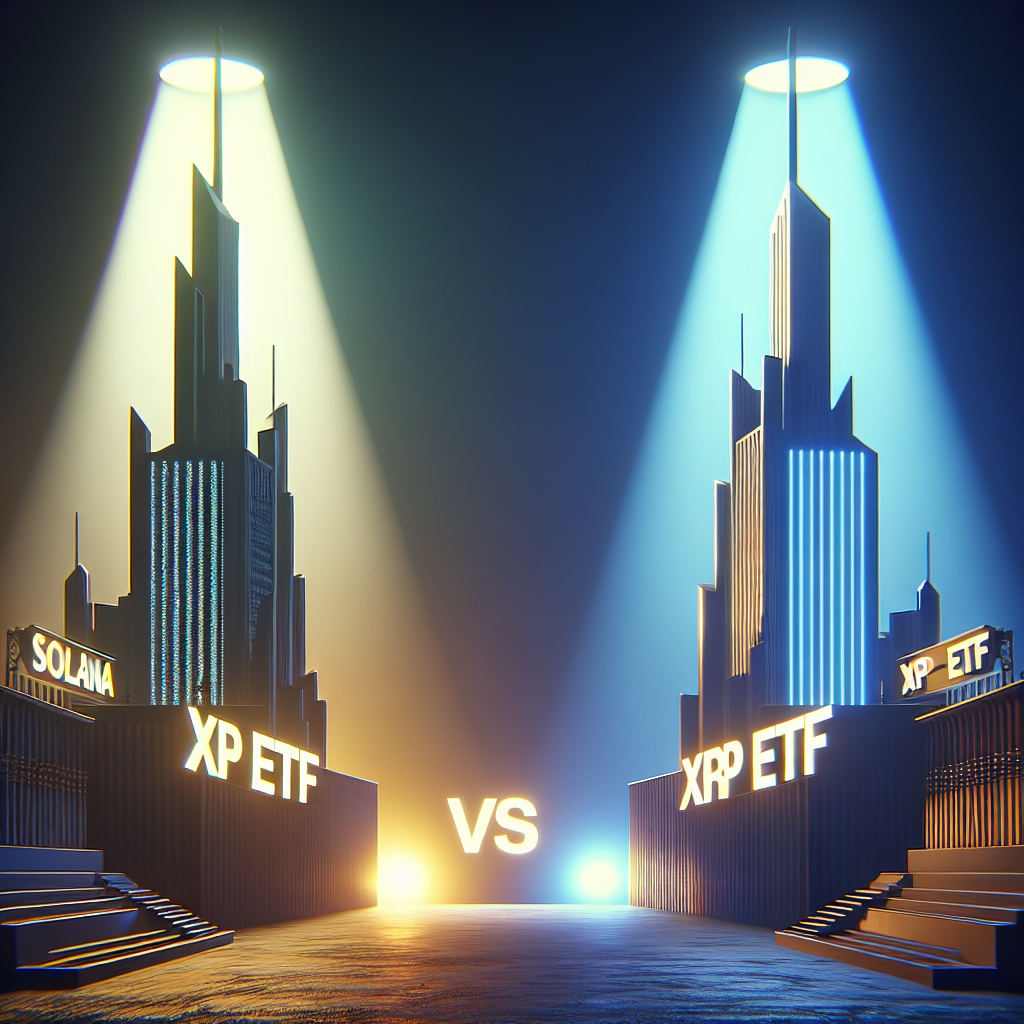Solana ETF vs. XRP ETF: Which One Comes Out on Top?
Crypto investors have been riding the ETF hype train ever since Bitcoin and Ethereum scored their long-awaited spot ETF approvals. With prices pumping and market confidence on the rise, it’s no surprise that the spotlight has shifted to the next possible contenders: Solana (SOL) and XRP. These two altcoin heavyweights are now in the ETF waiting room, and while the SEC hasn’t buzzed them in just yet, the anticipation is electric. But the real question isn’t just “when” — it’s “which one is better for your crypto portfolio?” Let’s break it down like it’s a season finale cliffhanger.
Solana vs. XRP ETFs: The Regulatory Race Heats Up
After Bitcoin and Ethereum got their golden ETF tickets in 2024, investors naturally turned their gaze to the next digital assets with enough clout to make it to the big leagues. Enter Solana and XRP — two very different projects with equally devoted fanbases. And while the SEC is still playing hard to get, the ETF filings are stacking up faster than Taylor Swift re-recording albums.
Canada, always a bit ahead when it comes to financial innovation and maple syrup, has already given the green light to multiple Solana ETFs. That’s right — our northern neighbors officially became the first to list spot Solana ETFs, giving SOL bulls something to cheer about. Meanwhile, U.S.-based investment giants like Grayscale, Bitwise, and VanEck are camped outside the SEC’s door, espresso in hand, waiting for the go-ahead. XRP fans might feel a little smug here, as there are even more filings for an XRP ETF than for SOL.
Mark your calendars for May 22 — it’s not just another Wednesday, it could be the day the SEC finally responds to Grayscale’s XRP ETF application. Analysts at Kaiko have even suggested that XRP may have the edge in the U.S. ETF race because of its superior liquidity across American exchanges. In ETF terms, liquidity is like star power — and XRP’s got it in spades.
Solana or XRP ETF: Which One Deserves Your Investment Spotlight?
Both Solana and XRP ETFs are still pending approval in the U.S., but that hasn’t stopped the speculators from placing their bets. On Polymarket, the odds of a SOL ETF being approved by 2025 are sitting at a spicy 88%, while XRP isn’t far behind at 77%. These odds have been climbing like Dogecoin during a Musk tweetstorm, thanks to recent developments like Teucrium’s XRP ETF launch and Canada’s Solana ETF rollout.
And let’s not forget the wildcard in this ETF drama — Paul Atkins. With the former SEC commissioner potentially taking on a bigger role, investor sentiment is shifting. His pro-market stance could mean smoother sailing for both ETFs, but especially for XRP, which has been stuck in regulatory limbo for what feels like forever. If the ongoing Ripple vs. SEC case finally wraps up with some clarity, XRP could find itself back in the spotlight, flipping Solana like a pancake on Sunday morning.
Now, if we’re talking pure numbers, XRP tends to dominate when it comes to liquidity and slippage — two crucial factors for ETF performance. Lower slippage means better pricing for investors, and higher liquidity means tighter spreads and faster execution. SOL, on the other hand, boasts blazing transaction speeds and a vibrant DeFi ecosystem, making it the tech darling of the altcoin world. Choosing between them is like choosing between Batman and Iron Man. One’s got the gadgets (Solana), the other’s got the legal drama and a loyal fanbase (XRP).
Final Verdict: Which ETF Comes Out on Top?
The truth is, it all comes down to your investing style. If you’re after a token with deep liquidity, a strong legal case for clarity, and less slippage, XRP might be the star of your ETF portfolio. If you’re more into high-performance chains with broad ecosystem growth and major institutional backing, Solana could be your golden ticket.
Both have their merits, and both are knocking on the SEC’s door with increasing urgency. Until approvals are officially stamped, it’s a waiting game — but one that could pay off big depending on how the chips fall. So, whether you’re team SOL or team XRP, keep your popcorn ready. The ETF drama is just getting started.
FAQs: Solana ETF vs. XRP ETF
When will the Solana and XRP ETFs be approved?
There are no official dates yet, but May 22 could be key for XRP, as the SEC may respond to Grayscale’s ETF filing. Solana also has multiple filings pending, with growing odds of approval in 2025.
Why is XRP considered more likely to be approved first?
XRP has higher liquidity across U.S. exchanges and more ETF filings than Solana. Analysts also believe that if the Ripple vs. SEC lawsuit concludes favorably, it could pave the way for quicker approval.
Does Canada already have Solana ETFs?
Yes! Canada recently launched multiple spot Solana ETFs, making it the first country to do so and giving SOL a significant head start in the ETF arena.
Which is better for long-term investment: Solana or XRP ETF?
That depends on your investment goals. Solana offers fast transactions and a growing DeFi ecosystem, while XRP is more established in terms of liquidity and regulatory attention. Diversifying across both could be a strategic move.
How do ETF approvals affect crypto prices?
Historically, ETF approvals have led to increased visibility, institutional interest, and Where to Buy surges. Just look at what happened with Bitcoin and Ethereum after their spot ETFs launched in 2024.





